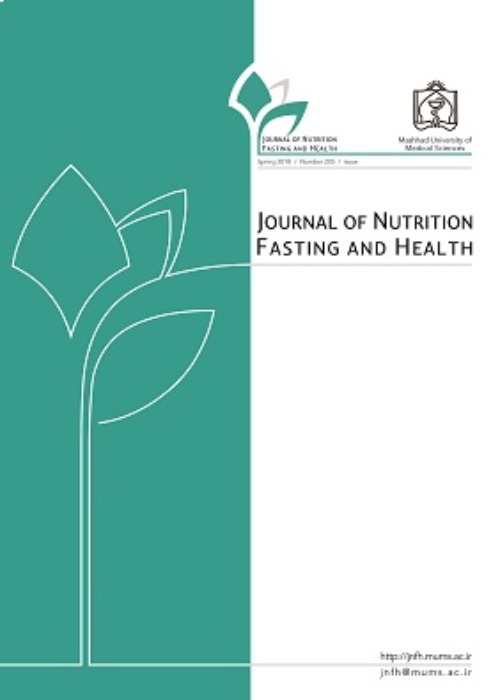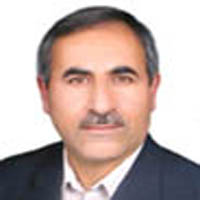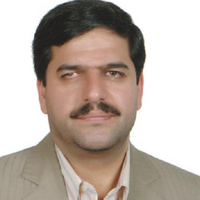A Qualitative Analysis of Health Care Providers' Perceptions on Vitamin D Supplementation Program
Author(s):
Maryam Saberi-Karimian , Mina Minaei , Farzaneh Sadeghi , Morvarid Irani , Talaat Khadiv Zadeh , Ibrahim Elmadfa , Habibollah Esmaily , Hamideh Ghazizadeh , Payam Sharifan , Ameneh Timar , Zahra Abasalti , Mahdieh Sheikhi , Aliakbar Haghveysi , Gordon Ferns , Mehdi Zanganeh Baygi , Zahra Abdollahi , Majid Ghayour-Mobarhan *
Article Type:
Research/Original Article (دارای رتبه معتبر)
Abstract:
Previous studies have shown that the health burden associated with vitamin D deficiency is increasing globally. Vitamin D supplementation appears to be a feasible strategy for improving vitamin D status within populations. Little information is available on the perception and barriers to the widespread application of vitamin D supplements in Iran. Therefore, this study was conducted to explore the perception of health care providers regarding the implementation of vitamin D supplementation program in the Iranian cities of Mashhad, Qom and Zahedan.This qualitative conventional content analysis study was conducted at 3 medical universities in Iran: Mashhad (MUMS), Qom (QUMS) and Zahedan (ZAUMS) University of Medical Sciences. These universities, are within regions with differing prevalence of vitamin D deficiency, and were selected based on the results of National Integrated Micronutrient Survey 2012 (NIMS-II study). Individual semi-structured in-depth interviews were performed with 103 participants (consisting of health professionals and health providers) to understand the perceptions of health professionals and health care providers’. The data were collected from December 2018 to July 2019. Guba and Lincoln’s criteria were used to ensure the trustworthiness of the data. Data were analyzed using conventional content analysis based on the approach of Graneheim and Lundman's.There were three categories of barriers to distribution and use of individual supplements, and the funding to implement the program; there were ten subcategories. Supplement distribution were affected by three subcategories of inadequate distribution of the supplement, irregular distribution of the supplement, and insufficient space to store the supplements. Individual barriers to the use of supplement comprised five subcategories: forgetting to take them, lack of knowledge about their benefits, accessing a health care center providing them, negative advertising for supplement use, and not taking them because of cost. Funding to implement the program contained the two subcategories of financial limitation in urban and rural area and financial limitation for all target groups.The findings showed that health care providers reported a variety of barriers to supplement use. Applying a multiple strategy requires: training, conducting advertising campaigns, financial support, sufficient and regular distribution of the supplement and perhaps the use of alternative methods of supplement delivery, such as food fortification can be helpful.
Keywords:
Language:
English
Published:
Journal of Nutrition, Fasting and Health, Volume:10 Issue: 3, Summer 2022
Pages:
195 to 202
magiran.com/p2484036
دانلود و مطالعه متن این مقاله با یکی از روشهای زیر امکان پذیر است:
اشتراک شخصی
با عضویت و پرداخت آنلاین حق اشتراک یکساله به مبلغ 1,390,000ريال میتوانید 70 عنوان مطلب دانلود کنید!
اشتراک سازمانی
به کتابخانه دانشگاه یا محل کار خود پیشنهاد کنید تا اشتراک سازمانی این پایگاه را برای دسترسی نامحدود همه کاربران به متن مطالب تهیه نمایند!
توجه!
- حق عضویت دریافتی صرف حمایت از نشریات عضو و نگهداری، تکمیل و توسعه مگیران میشود.
- پرداخت حق اشتراک و دانلود مقالات اجازه بازنشر آن در سایر رسانههای چاپی و دیجیتال را به کاربر نمیدهد.
دسترسی سراسری کاربران دانشگاه پیام نور!
اعضای هیئت علمی و دانشجویان دانشگاه پیام نور در سراسر کشور، در صورت ثبت نام با ایمیل دانشگاهی، تا پایان فروردین ماه 1403 به مقالات سایت دسترسی خواهند داشت!
In order to view content subscription is required
Personal subscription
Subscribe magiran.com for 70 € euros via PayPal and download 70 articles during a year.
Organization subscription
Please contact us to subscribe your university or library for unlimited access!





